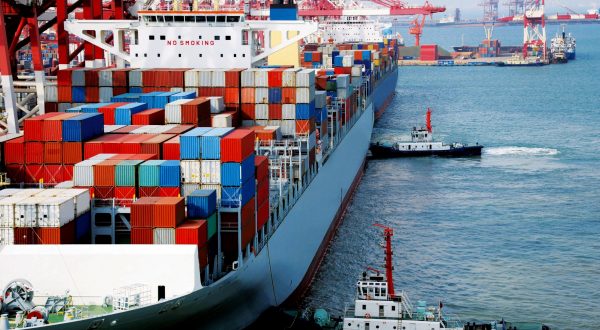India’s total containerized cargo capacity of 8.75 million TEUs (twenty-foot equivalent units) at all its 12 major ports is less than a quarter of containerized goods handled at China’s single port of Shanghai, making it imperative for the country “to do a fast catching up”, noted India’s Associated Chambers of Commerce (ASSOCHAM) in a new report.
Though India’s ports have met in rapidly expanding traffic, handling more than a billion tonne of cargo in 2016-17 and the capacity is expected to increase to 2.5 billion tonnes by 2025, the freight mainly comprises POL (petrol, oil, and lubricant), coal, iron ore and other commodities.
Even on the parameter of overall cargo, both with or without containerization, India has a fragmented capacity at different ports. In China, there are six cargo ports which can handle over 500 million tonnes cargo per annum and it has another eight ports which handle cargo more than 100 million tonnes up to 500 million tonnes.
Commenting on the infrastructure in India, ASSOCHAM secretary general, Mr D.S. Rawat, commented that of the world’s top 20 ports, 14 are in China and there are no Indian port figures in the world’s top 20.
“In contrast, India has just two ports which handle beyond 100 MT – Kandla and Mundra. Fragmentation of port capacity in India is demonstrated by the fact that India’s 12 major ports handle cargo far less than Shanghai port. Large productivity gains can be achieved by improving existing ports at a much lower marginal cost,” the study noted.
The study titled ‘Indian ports sector: Challenges of scale and efficient operations,’ suggests the following key points:
- The use of containers is imperative to promote multi modal transportation. These containers can travel across all modes. Containers save handling costs when freight must be transferred from one mode to another and this calls for cost effective models with ready infrastructure.
- It would be appropriate to augment capacity of existing ports to create ports with large capacity of 100 million tonnes (MT) rather than creating new ports and spreading resources thinly.
- As investment in port capacity is a must for India to remain competitive globally, industry needs to address how to identify, fund, operate and make targeted infrastructure improvements in key elements of maritime transportation system.
- The proposed national ports strategy should include a clear articulation of function and hierarchy of India’s ports within context of a national supply chain.
- There is the need for India to revisit the Major Ports Trusts Act, 1963 with a view to modernise the institutional structure of major ports and to secure greater operational freedom for ports, in tune with present day requirements.
- A single-window clearance is required to promote ease of doing business in the ports sector.






























































